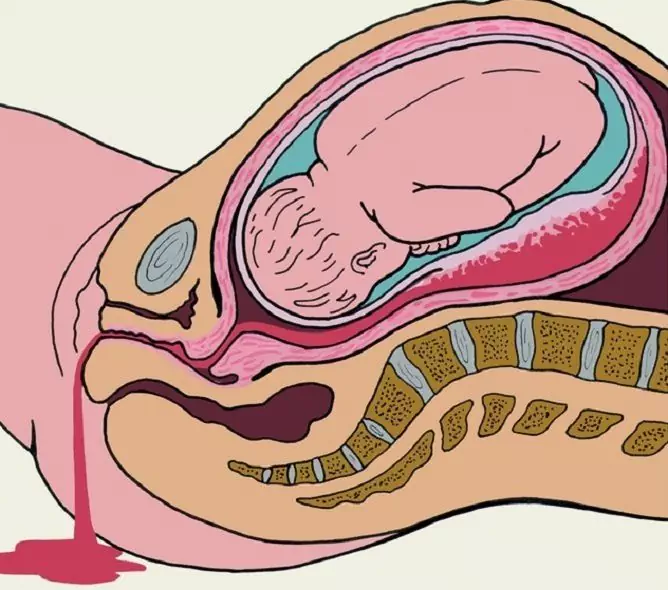- Author Rachel Wainwright [email protected].
- Public 2023-12-15 07:39.
- Last modified 2025-11-02 20:14.
Balanoposthitis

Balanoposthitis is a combined inflammation of the foreskin and glans penis. With localized inflammation of only the foreskin, the disease is called "postitis", and an isolated inflammatory process of only the glans penis is called "balanitis".
The delicate male disease balanoposthitis is most often caused by insufficient hygiene of the genitals. As a result, an ideal environment for the reproduction of streptococci, staphylococci, E. coli and other pathogens is formed under the foreskin.
The infection can get on the man's penis during unprotected sex if the partner has vaginal dysbiosis. An infectious infection of the glans penis is also possible through oral or anal contact. Allergic and toxic forms of balanoposthitis are much less common.
Among the factors that provoke the development of balanoposthitis, phimosis (narrowing of the skin of the foreskin) is also called. This disease leads to incomplete exposure of the glans penis and, consequently, to poor hygiene.
Conditions for the multiplication of infection and the development of balanoposthitis can create diseases associated with metabolic disorders and with a significant decrease in immunity, for example, diabetes mellitus.
Symptoms of balanoposthitis
The clinical symptoms of balanoposthitis are redness, as well as severe swelling of the foreskin and glans penis. Patients with symptoms of balanoposthitis complain of a burning sensation or itching. Often, the disease is accompanied by genital discharge with an unpleasant odor. Balanoposthitis sometimes causes swollen lymph nodes in the inguinal nodes and ulceration of the glans penis.
A later symptom of balanoposthitis is considered to be pus secreted from the preputial sac (skin fold of the foreskin of the penis). Prolonged inflammation leads to a decrease in the sensitivity of the glans penis and can affect the quality of orgasm.
Ignoring the symptoms of balanoposthitis can also result in the spread of infection into the urinary system, the development of urethritis, pyelonephritis, renal failure, etc.
Diagnostics of the balanoposthitis
The diagnosis of balanoposthitis is established by a urologist during a physical examination. Additional analyzes for obvious clinical symptoms of balanoposthitis are usually not required.
In the differential diagnosis of balanoposthitis from Reiter's disease, skin deprivation, leukoplakia or oncology of the penis, the study of bacterial inoculation of urethral secretions, foreskin and glans penis is used. Sometimes a biopsy of genital tissue is also necessary.
Balanoposthitis treatment
Treatment of balanoposthitis is complex and includes the solution of at least 3 problems. To treat balanoposthitis, like most other infectious diseases, you need to use antiseptics and immunomodulators. It is recommended to treat the head and foreskin of the penis with solutions of Miramistin or Chlorhexidine for 1 week or longer.
It is also important to remember that hormonal drugs in the treatment of balanoposthitis are practically not used today, and the appointment of antibiotics is justified only in the case of a proven bacterial etiology of the disease.
How to treat balanoposthitis with immunomodulators?
Preparations for local immunity enhancement are prescribed individually in order to improve the protective properties of the genital mucosa. Most often, with balanoposthitis, rectal administration of Genferon or irrigation with Cycloferon is recommended.
Effective treatment of balanoposthitis is possible only if an enhanced intimate hyena is observed. Patients are advised to thoroughly wash their genitals several times a day with warm soapy water. After a shower, be sure to thoroughly drain the glans.
How to treat complicated balanoposthitis?

With balanoposthitis, complicated by paraphimosis (infringement of the head of the penis), surgical treatment is used. Excision of the foreskin with balanoposthitis can be performed using a laser or a surgical scalpel.
The procedure is performed under local anesthesia. Bloodless, the so-called manual reduction of the head with balanoposthitis rarely succeeds. For the prevention of repeated infringements in recurrent cases of balanoposthitis, circumcision (circumcision of the foreskin) is recommended.
Prevention of balanoposthitis
It is possible to avoid the development of balanoposthitis or relapses of the disease with the help of careful intimate hygiene. The second important factor in men's health is a partner's responsible attitude to their health. Regular examinations by a gynecologist will allow her to timely identify vaginal dysbiosis and prevent the development of balanoposthitis in a man.
YouTube video related to the article:
The information is generalized and provided for informational purposes only. At the first sign of illness, see your doctor. Self-medication is hazardous to health!






